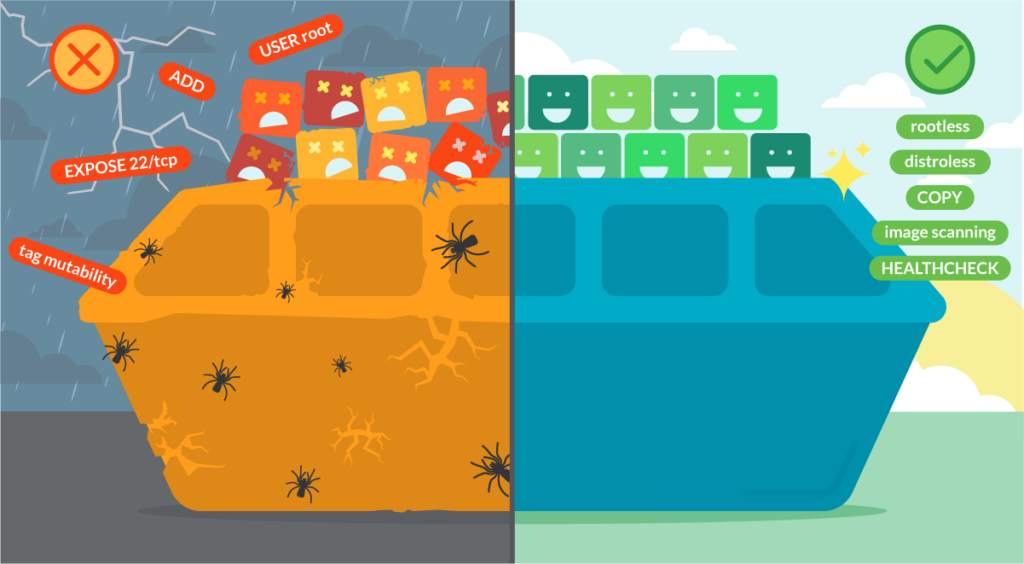Optimizing Images, Boosting Efficiency: Containerization Best Practices
In pursuing technological advancements, containers have emerged as the unsung heroes of software development, reshaping the landscape with their unparalleled adaptability. In an era where agility is paramount, containers have become the Software Development Life Cycle (SDLC) hub. According to the Harvard Business Review,” Containerization helps you achieve a greener, more sustainable Software Lifecycle.” Their ability to encapsulate an application and its dependencies into a single, portable unit ensures consistency from development through testing to deployment. This portability simplifies collaboration between developers and operations and accelerates the delivery of applications, minimizing the feared “it works on my machine” problem.
Start with a Microservices Architecture
Microservices, the architectural shift where applications are broken down into small, independent services, bring scalability to the forefront. Instead of dealing with a monolithic structure, developers work with discrete, manageable components. This facilitates agility and enables targeted updates and enhancements without disrupting the entire application.
The key lies in the independence of these microservices. Each service operates independently, communicating with others through well-defined APIs. As your application evolves, new services can be seamlessly integrated, paving the way for an adaptive and scalable software ecosystem. Packing software into a container is now easier using a microservices-based architecture.
Optimize Image Sizes
Optimizing image sizes is a crucial strategy for enhancing performance and resource efficiency in Containerization. Images containing the application and its dependencies are the building blocks of containers. Bloated images consume unnecessary storage space and impact deployment speed and overall efficiency.
Adopting practices like image layering is essential to streamline performance, where only the necessary components are included in each layer. Removing redundant files, compressing images, and leveraging multi-stage builds are additional tactics. These steps reduce the container’s footprint and accelerate image pull times during deployment.

Implement Version Control
In Containerization, implementing version control is similar to having a safety net for your development process. Version control systems, like Git, allow developers to track changes, collaborate seamlessly, and roll back to previous states if needed. This practice ensures that every modification in your containerized environment is recorded, offering a systematic approach to development. With version control in place, teams can confidently experiment, knowing they can revert to stable states if unforeseen challenges arise.
Orchestrate with Kubernetes
Kubernetes is the orchestrator that adds a layer of efficiency to Containerization. With Kubernetes, managing and scaling containers becomes a breeze. It automates deployment, scaling, and operations, providing a unified framework for containerization. This orchestration tool simplifies complex tasks, allowing developers to focus on crafting applications rather than getting bothered by the intricacies of deployment. Kubernetes ensures that your containerized applications run seamlessly, offering a robust solution for orchestrating the diverse components within a microservices architecture.
Monitoring and Logging
Monitoring and logging are the alerts that ensure your applications run smoothly. Monitoring tools keep track of container performance metrics, instantly detecting any anomalies. Coupled with robust logging practices, they provide a detailed record of events, aiding in troubleshooting and performance optimization. Effectively implemented monitoring and logging turn the complex task of container management into an informed, proactive process, safeguarding your applications against potential issues and ensuring their optimal performance.
Embracing Containerization with these best practices is not just a technological shift; it’s a strategic move toward efficiency and resilience. As someone navigating the dynamic landscape of modern development, I find the adoption of microservices, image optimization, version control, Kubernetes orchestration, and robust monitoring to be more than just trends—they are necessities. These practices not only streamline development but foster an environment where innovation thrives. The container revolution isn’t just a shift; it’s a leap toward a future where agility and reliability define success. For more insightful blogs, visit auxin.io






